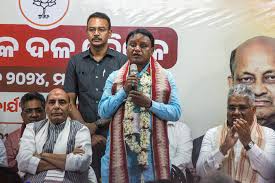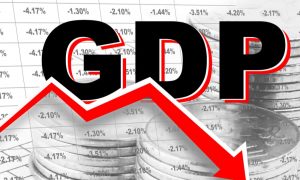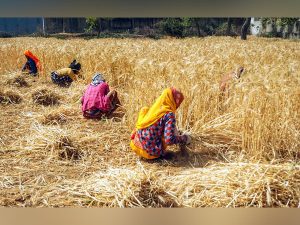 By Nageshwar Patnaik in Bhubaneswar, June 16, 2024: It took 24 years and 99 days to see the change of guard in Odisha’s power corridor. Naveen Patnaik, the gentle colossus, has the second longest tenure for any one in India, after Pawan Kumar Chamling who served 66 days longer in Sikkim as Chief Minister (CM).
By Nageshwar Patnaik in Bhubaneswar, June 16, 2024: It took 24 years and 99 days to see the change of guard in Odisha’s power corridor. Naveen Patnaik, the gentle colossus, has the second longest tenure for any one in India, after Pawan Kumar Chamling who served 66 days longer in Sikkim as Chief Minister (CM).
The newly sworn-in CM Mohan Charan Majhi is the first politician from the Bharatiya Janata Party (BJP) to occupy the post in the State and faces the tough challenge to take Odisha to the club of richer states, such as Gujarat, Tamil Nadu and Karnataka.
Once clubbed along with the Bimaru (Bihar, Madhya Pradesh, Rajasthan, Uttar Pradesh) states because of its poor ratings on human development indices, Orissa has come a long way during the last two decades undergoing a radical metamorphosis, an image makeover, thanks to the never-say-die attitude of the Biju Janata Dal (BJD) leader, Naveen Patnaik.
 Compared to the previous CM, Majhi is fortunate to take over a booming state. When Naveen Patnaik took over the reins of the state in post-Super Cyclone 2000, Odisha was virtually bankrupt and one of the poorest states in the country then. Even the state government was not in a position to pay salaries to its employees.
Compared to the previous CM, Majhi is fortunate to take over a booming state. When Naveen Patnaik took over the reins of the state in post-Super Cyclone 2000, Odisha was virtually bankrupt and one of the poorest states in the country then. Even the state government was not in a position to pay salaries to its employees.
The poor financial health of the state had its bearings on the development activities and restoration and rehabilitation work as warranted then. Ever since, the state has learned to manage its resources by tightening the expenditure controls wherever required with a strong fiscal stance, hiving off many unnecessary posts and loss making public enterprises and following a strict governance approach to bring the state’s economy to shape.
Stats speak for it. The economy of Odisha has grown at a rate of 11.5 per cent in 2021-22 and 7.8 per cent in 2022-23. These growth rates have not only been significantly higher than that at the national level for the corresponding years, but also surpassed the pre-pandemic trend of performance. The state is currently undergoing significant shifts across multiple sectors. These include education, healthcare, agriculture among others. These transformations are not mere incremental changes but represent paradigm shifts in how these sectors operate and contribute to society.
The state has nearly bridged the gap with the national per-capita income. In 2003, its per-capita income was 60% of the national average, and today, it’s close to 90%. This was possible as Odisha’s economy grew faster (7.4%) than the national average (6.2%). Its population growth rate has slowed to 0.6% a year, compared to 0.9% for the nation. Moreover, there have been noticeable improvements in various socioeconomic parameters, such as GER (gross enrolment ratio), gender parity index, infant mortality rate, fertility rate, life expectancy, immunization, and access to sanitation, drinking water and electricity.
 Odisha has among the best fiscal yardsticks due to its deft fiscal management. It has been running a revenue surplus, unlike revenue deficit for an average state. It holds few contingent liabilities and runs a fiscal deficit within the limits mandated under its fiscal rule. The state’s Capital Expenditure has doubled to nearly five per cent of its Gross Domestic Product (GDP) during the last decade and far exceeds that of an average state.
Odisha has among the best fiscal yardsticks due to its deft fiscal management. It has been running a revenue surplus, unlike revenue deficit for an average state. It holds few contingent liabilities and runs a fiscal deficit within the limits mandated under its fiscal rule. The state’s Capital Expenditure has doubled to nearly five per cent of its Gross Domestic Product (GDP) during the last decade and far exceeds that of an average state.
But these initiatives are yet to produce sustainable, productive, and competitive sectors that would ensure higher growth to catch up with developed states. Its transformation will demand not just creative and vigorous diversification, but also deeper partnerships. For all its successes in reducing poverty and diversifying its economy, Odisha still remains among the poorest States in the country, with an estimated 11.07% of its population below the Multidimensional Poverty Index in 2023, according to NITI-Aayog and only six major States having higher numbers.
Odisha’s urbanization rate of 18% is only half that of the national average. Enrolment ratio in higher education is only 22% compared to the national average of 28%, and much below that of the leading states, such as Tamil Nadu’s 47%. Bank credit-to-GDP ratio at 29% is nearly half that of the national average. These stats indicate that despite lifting itself from the rank of a low-income economy to that of a low-middle-income one, Odisha has miles to go before it can become an advanced economy.
Given its natural advantages, the State has the potential to be home to the core sector of India and its challenge would be to consolidate on these gains. The percentage share of manufacturing sector to Gross State Domestic Product (GSDP) is very high in Odisha, much higher than the national average and it has a potential to strengthen and contribute to the national GDP at a higher rate.
 Mr. Majhi has rich experience as a legislator and a political organiser, having begun his political journey as an administrator. His rise to the prized post marks a breakthrough for the BJP. The first Cabinet under Majhi approved the implementation of two of its major poll promises within 100 days — increasing the minimum support price (MSP) of paddy to Rs 3,100 per quintal and Subhadra Yojana, under which it has promised to provide a voucher of Rs 50,000 to every married woman that, can be encashed in two years. However, as both promises would put a considerable financial burden on the state exchequer, the cabinet has asked a high level official team to deliberate on the issue and recommend an action plan.
Mr. Majhi has rich experience as a legislator and a political organiser, having begun his political journey as an administrator. His rise to the prized post marks a breakthrough for the BJP. The first Cabinet under Majhi approved the implementation of two of its major poll promises within 100 days — increasing the minimum support price (MSP) of paddy to Rs 3,100 per quintal and Subhadra Yojana, under which it has promised to provide a voucher of Rs 50,000 to every married woman that, can be encashed in two years. However, as both promises would put a considerable financial burden on the state exchequer, the cabinet has asked a high level official team to deliberate on the issue and recommend an action plan.
Mr. Majhi led BJP government has its task cut out. Odisha rewarded Naveen Patnaik with a long tenure not just for governance but also for bringing peace to a State that has seen communal riots in its tribal regions at a time when his party was in alliance with the BJP. The Majhi government must focus on continuing the developmental work to make Odisha a developed state sooner than later.


Leave a Reply
Be the First to Comment!